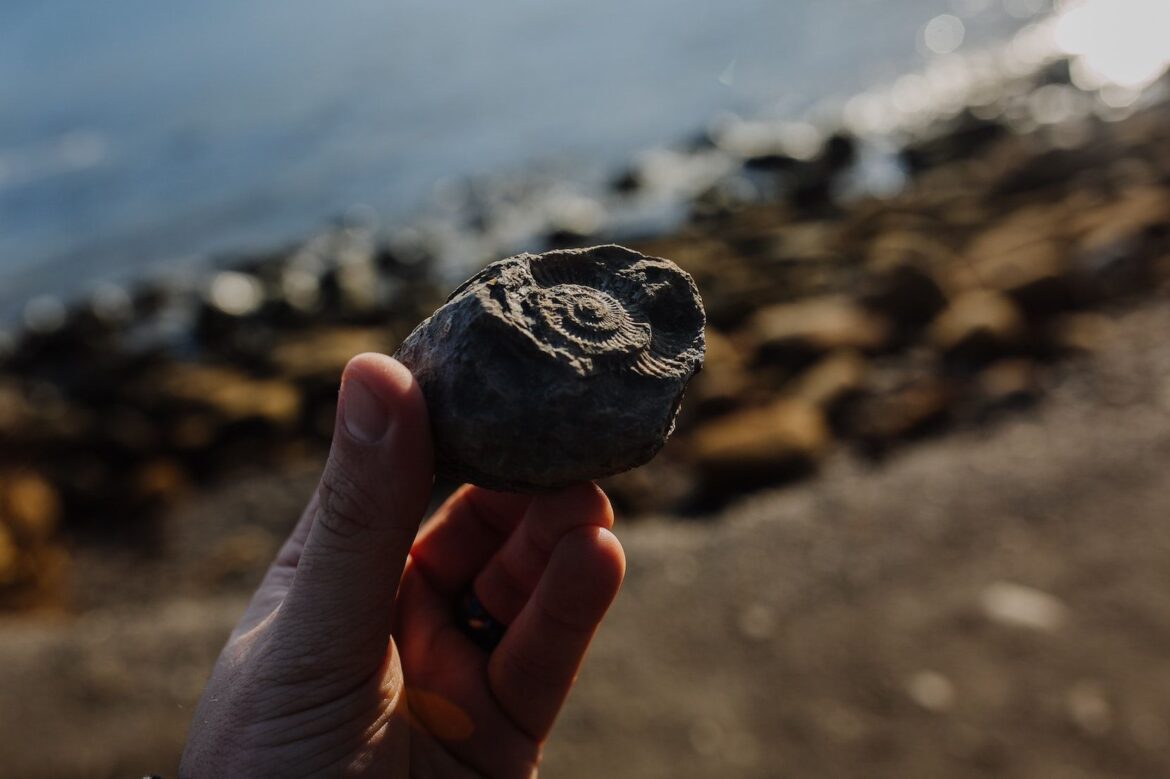Pursue a piece of history as you focus on the present and explore the outdoors with this thought-provoking pastime
A fantastically fun activity to indulge your curiosity and unleash your inner Indiana Jones, embrace the outdoors next time you’re at the coast, and spend some time scavenging for timeless treasures.
A snapshot of life, typically thousands of years old, fossils are often found in sedimentary rocks such as sandstone, limestone, and shale – or sometimes even slate. They are formed when sediment falls over the remains of organisms, as the layers build and compact over years, it forms solid rock that preserves them.
You can hunt for fossils at any time of year, but you’re most likely to be successful over the winter and spring months, due to more bracing weather eroding the rock formations around the coastline. And while you’re out breathing the fresh air, completely focusing on the task at hand, you can just ‘be’ in the present, and allow the stresses and pressures of normal life to leave you in peace for a short while.
Ready to try fossil hunting for yourself?
Things to look for:
Focus on the details. See if patterns, marks, or regular lines in rocks catch your eye.
Wet stones often highlight the marks of fossils better, so they’re easier to spot. So it can be helpful to watch for clusters of rocks by the water’s edge.
You might not always find a ‘complete’ fossil – some might be partial, or the edge of one, so ensure you’re not overlooking these fascinating finds as well.
Some of the more common fossil types to spot are:
Ammonites
Probably what you instantly picture when you think of a ‘fossil’, ammonites are historic sea predators that resemble coiled snail shells. They were similar to squid creatures, and can often be found in Dorset.
Shark teeth
It’s reported that these are often found on the Essex coast, and some can be as large as your hand!
Sea urchins
These could be up to 450 million years old, and can range in size from similar to a Brussels sprout, right up to a grapefruit. They are some of the more common fossils, but can be hard to spot.
Gryphaea (Devil’s Toenails)
Originating from oysters, these fossils have a claw-like appearance, and are often found off the coast of Yorkshire.
1. Do a little research before your trip, to ensure you have any necessary permissions before visiting a location.
2. Look up the tide schedule ahead of fossil hunting.
3. Always stay safe and be aware of your surroundings (water, cliffs, loose rocks).
4. Respect your surroundings and ensure you cause as minimal impact to the environment as possible. You don’t have to take everything you find!
5. Find something really special? You might want to report it for official records to a local museum or an online fossil hunting site.
6. You’re a beginner? Search online for organised groups and meet up.
For plenty of handy tips, and even a map of locations to explore, head to ukfossils.co.uk

